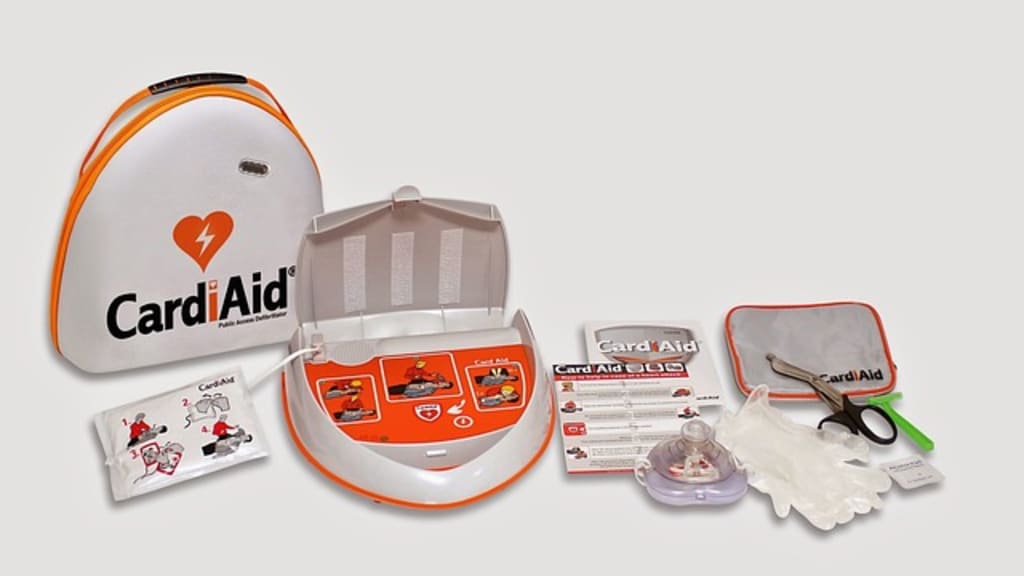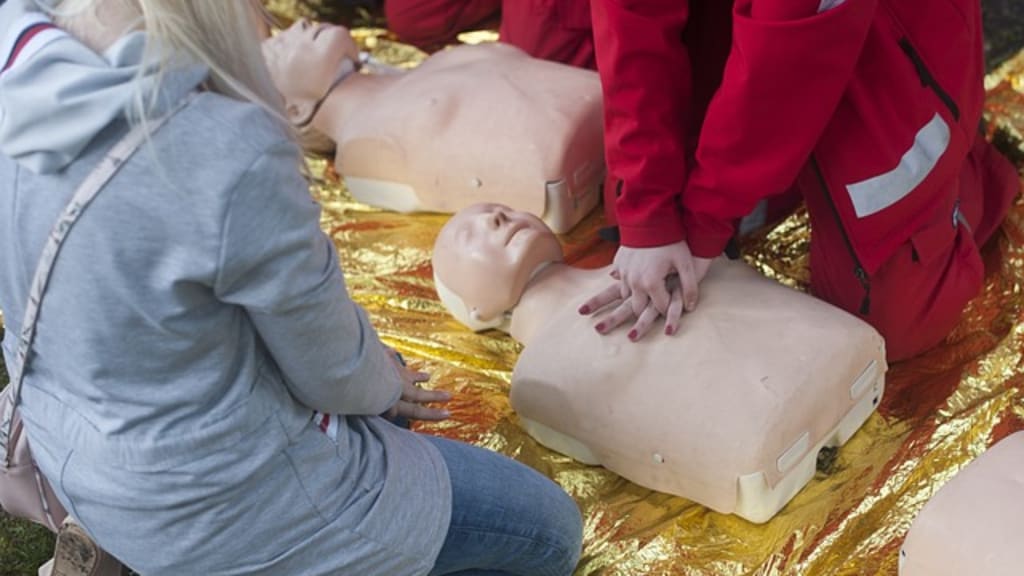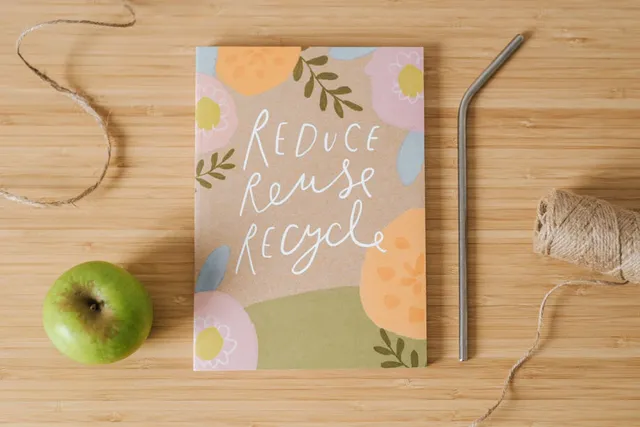
Automated External Defibrillators (AED) are lightweight, easy to use portable electronic devices that can analyse the heart’s rhythm. If required, an AED can deliver an electric shock through the chest to the heart to change an abnormal heart rhythm to normal. These are generally used on an adult or child who has a sudden cardiac arrest. Using AED as early as possible on someone who has sudden cardiac arrest is the best chance of improving the chance of survival.
Anyone can use an AED as the machine is safe and analyses the person’s heart rhythm and then gives visual or voice prompts to guide you through the next steps. General steps on how to use an AED once it is available are as follows:
Adults and children
Follow the steps for an adult or for a child over 8 years old or over 25 kg (55 pounds).
- Turn on the AED and follow the voice prompts
- Remove any clothing covering the chest and the AED must not be placed over any clothing or jewellery. Wipe the chest dry if necessary
- Pads on the AED should have visual indication on where they need to be placed.
- One pad will need to be placed on the upper right side of the chest. Check for the diagram on the top of the pads
- The other pad will need to be placed on the lower left side of the chest, a few inches below the left armpit.
- Plug the pad connector cable into the AED.
- Let the AED analyse the person’s heart rhythm. While AED is analysing it will advise that
- No person including yourself should be touching the person
- Shout “CLEAR” in a loud voice to ensure no one is touching the person
- If the AED determines that a shock is required
- Again make sure no one is touching the person.
- Shout “CLEAR” in a loud voice to ensure no one is touching the person.
- Push the “shock” button to deliver the shock
- After the AED delivers the shock or if no shock is advised, immediately start CPR.
- AED might have a metronome (an audible tick sound) that you can use to deliver the compression timing.
- After 2 mins the AED will stop and analyse the person’s heart rhythm again.
Watch the video from AHA on hands-only CPR along with AED.
Infants and children
Follow the steps for an infant and children under 8 years old or less than 25 kg (55 pounds).
- Turn on the AED and follow the voice prompts.
- For infants less than a year old, a manual defibrillator should be used if available. If a manual defibrillator is not available then an AED may be used.
- Paediatric pads should be used but if they aren’t available use standard (adult) pads.
- If using adult pads, do not let the pads touch.
- For infants and small children if the pads are touching then put one pad on the centre front of the chest and put the second pad to the centre back.
- Plug the pad connector cable into the AED.
- Let the AED analyse the person’s heart rhythm. While AED is analysing it will advise that
- No person including yourself should be touching the person
- Shout “CLEAR” in a loud voice to ensure no one is touching the person.
- If the AED determines that a shock is required
- Again make sure no one is touching the person.
- Shout “CLEAR” in a loud voice to ensure no one is touching the person.
- Push the “shock” button to deliver the shock
- After the AED delivers the shock or if no shock is advised, immediately start CPR. Watch the video on how to use AED for an infant.
Disclaimer
This post may contain affiliate links which means we may receive a commission at no extra cost to you should you click through and make a purchase.
Note: please check the ingredients list of any products that you may wish to try and check for allergies or consult a medical professional for any existing conditions being impacted by switching to new products.
Attribution
Banner Image by R. H. from PixabayPrevious

12/12/2023
CPR: guide to performing CPR on teens and adultsLearn to perform CPR on teens and adults and things to consider while dealing with someone who has gone into cardiac arrest.
Next

21-11-2023
Getting started guide for health and hygieneIn this article, we look at changes that can help improve your health and hygiene in an eco friendly and sustainable way.